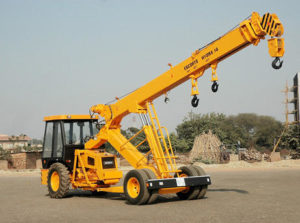 Purpose
Purpose
The Hydra Crane Operator Training training is designed to give in depth knowledge of load and crane stability so that hydra operator is aware of the danger involved due to tripping moment caused by heavy load. Also fresh trainees get hands on experience on running the Hydra Crane. The course covers syllabus as per OSHA 1926.1400 guidelines. The 3 days of hydra operator training covers all aspects of hydra safety in detail, be it load stability, tipping point, back wheel lift over ground due to fulcrum on front wheel, moving with load, pulling of load on hook etc.
Target Audience
- Experienced Operators
- Trainees
- Loss Control / Safety
- Management
- Inspectors
Course Content
- Hydra operational characteristics
- Frequent and periodic inspections
- How to read and apply hydra load charts
- Reeving and line pull
- Evaluating ground and soil stability
- Use of jibs and extensions
- Evaluating the load
- Wire rope types and inspection
- How to determine / approximate load weight
- Rigging Practice and Safety
- Driving / Moving with the load
- Understanding overall centre of gravity once load is lifted
- Site hazard identification and inspection
- Preventative Maintenance and Safety Inspection
- On-Site Equipment Movement — hazards such as unlevelled Ground, power lines etc.
Mobile boom cranes are widely used to perform important tasks in various applications. Their mobility, unlike other types of the conventional cranes, provides an advantage of faster positioning. During use, the crane base is normally fixed to the ground before lifting heavy payloads to stabilize the base and prevent tip-over.
However, this compromises the mobility advantage of the mobile boom cranes. Realizing both maneuverability and stability of the base, while the crane is operated for lifting and transferring materials, can greatly enhance the utility of mobile boom cranes.
Combining the base motion with regular crane operations (lifting, luffing and slewing) can expand the crane’s workspace to everywhere on the working plane field.
Base and crane motion, however, also presents a problem of stability reduction. A payload attached to the crane and its swing due to motion decreases the stability margin of the base and increases the chance of tip-over. Attaching complex payloads, such as a double-pendulum, further complicates the problem.
| Course | Fee INR | Duration | Course Timing | Date Commence | Remarks |
|---|---|---|---|---|---|
| Hydra Operator | 12,000 | 3 Days | 10:00-18:00 | On Demand | As per OSHA Guidelines |
